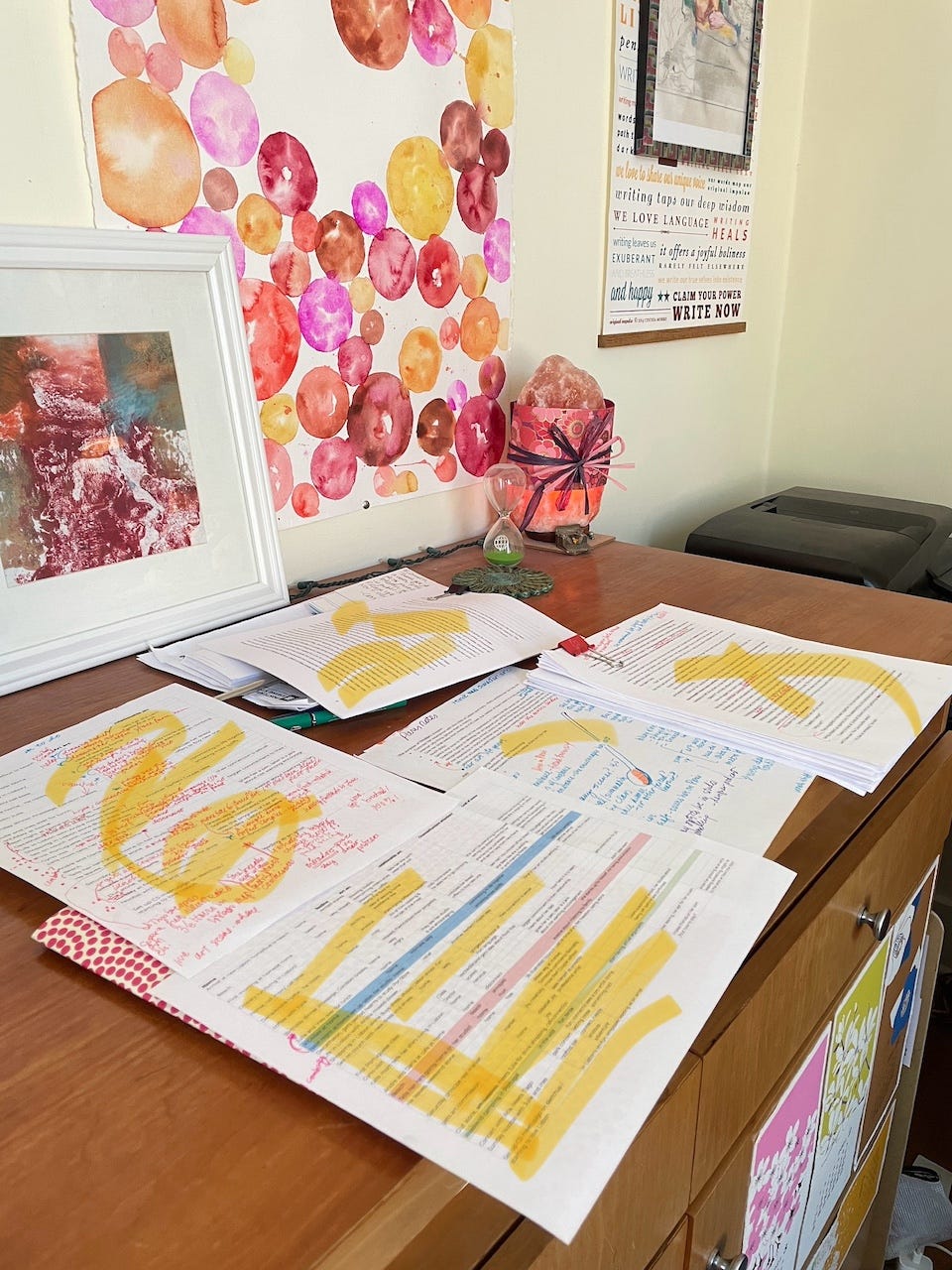Do you really suck as a writer? No, but chances are you need to learn some skills. What, specifically, do you need to learn to stay with this project? Most people need training in their medium, but we think that because we have the desire and perhaps some talent, every step of the way should flow like a unicorn lava chocolate fountain. Staying with our art is humbling.
The painful reality for us artists is that our desires may not match our skills. We want to make something elegant and what comes out is horribly clunky and awkward. Too often, we take this as a sign we don’t have talent. And we give up. But we’ve only really arrived at our creative edge.
When I moved from novel-writing to art-making, a part of me moaned. I had just spent twelve years learning how to write a novel. It took a lot of practice, work, and humility. When the desire to do visual art rose up in me, at first I resisted. I know how much work goes into skill-building. But then I thought, wait. I want to play with drawing, painting, and hand-lettering. I want to spend my time exploring. And I recalled a vital part of my Creative DNA - learning. I am always taking a class or reading to learn. The apprenticeship of developing as a visual artist was actually welcome work.
Consider your current medium. What is the main skill you need to make the kind of art or writing you want? I refer to this as the Creative Edge. This is the specific place where you need to focus and develop an element of your craft.
For example, learning to write a novel required I understand character development. I spent a lot of time on this. This did not involve ‘writing 1,000 words a day’ or feeling a clear sense of progress. Instead, it was a lot of study. I took classes, read books, studied movies and TV to learn how to develop a character under the surface of the action. I spent months at this creative edge.
My skill-building as an illustrator has included learning :
Procreate
combining digital and analog art
bringing visual and verbal together
drawing people
painting on larger surfaces.
Polishing our skills is part of the job. Learning requires patience and humility. Find support for the painstaking process. I often invite a friend to take a class with me so I have someone along for the ride. This helps me stay with the learning when the curve feels too steep and I want to bail out.
INVITATION
Identify your current creative edge. Perhaps look at the place where you are frustrated or have given up. Your inner critic might have told you you’re no good at that. I tell you it’s a matter of practice and skill-building.
Loving all the phases of the journey
The first part of any project is flush with enthusiasm, possibility, and excitement. We love this part because we feel full potential and power in possibility. But that fades and you’re left with the reality of the work ahead of you.
When you grow bored or disaffected, ask yourself “What’s to love about this phase of the process?” In each phase of making, there will be something different to appreciate. Like any relationship, we don’t inhabit the honeymoon phase forever. Take a moment to consider what your current phase is giving you. Use these coaching inquiries:
What’s exciting about this phase?
What is my commitment to this project?
What’s my creative edge now?
My favorite inquiry for almost any situation in life and creating is: “What’s here for me?”
You will hopefully learn to appreciate, if not love, all the phases of creating.
INVITATION
One
Notice the impact on you and your life when you do spend time and stay with your commitment. It’s easy to notice how bad we feel when we’re not doing it. Take time to integrate a reflection process into your creative practice.
I like a simple three-word reflection process. At the end of your creative sessions, take stock. What do you notice? In your artist notebook, jot down three words to describe how that was for you. Don’t overthink it, and feel free to add more than three words.
The point is to make it quick, simple, and easy to feel the impact of your creative time on your vibe, mood, and energy. It’s often a mixed bag. Some days it will feel sucky. You’ll see that there are a range of experiences and that the path of a maker isn’t always rosy or easy or fun. But you’ll learn that you can show up for it all, for whatever is waiting for you in your making process. Your list will show you what you are steering toward when you decide on each occasion to show up for your creativity.
Two
Identify your current creative edge. Make a list of skills you want to work on. You may refer to your list from your wanter for ideas.
Affirmation: I embrace all phases of the creative process and I love learning new skills.
In the comments: What’s your current creative edge?






I want a unicorn lava chocolate fountain!!!
Edge: Finding & threading the main point. I have to write & write & write & then untangle to find the "so what." Realizing how much of my life has been that way.
Question I ask: "Where is the joy?" - which brings me back to an aliveness for the work.
😘😘